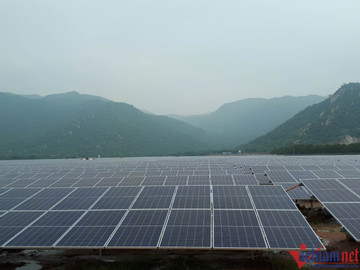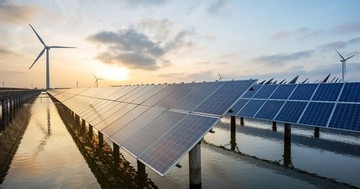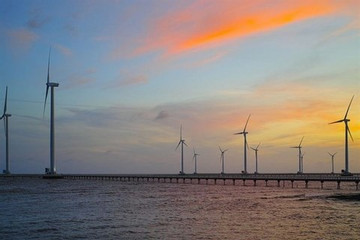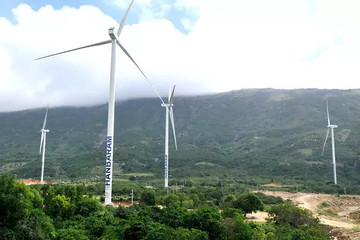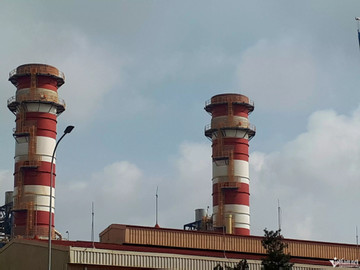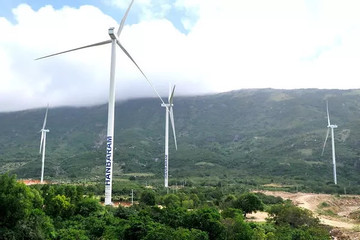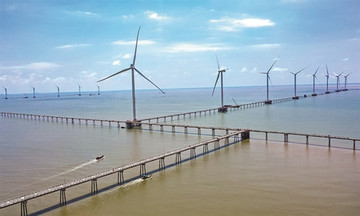- © Copyright of Vietnamnet Global.
- Tel: 024 3772 7988 Fax: (024) 37722734
- Email: [email protected]
renewable energy
Update news renewable energy
EVN worried about financial problems, historic losses
The Electricity of Vietnam (EVN) recorded a big loss of VND29 trillion in 2022. The figure may even double this year.
Renewable energy bidding policy is still not being applied: MOIT
At present, while choosing investors for electricity projects, except for BOT projects, the electricity selling price is still not being considered. Only after being chosen will investors begin negotiating for a power purchase agreement (PPA).
Prices for renewable energy still being negotiated
Negotiations about wind and solar power prices must observe the principles of publicity, transparency and consensus with investors.
Power sector faces coal price shocks
The power sector is in a difficult period because of the global fuel crisis. Higher production costs and higher cost prices compared to selling prices all have put the sector at risk.
AI used to predict renewable-energy capacity
Wind and solar power will account for an increasing proportion of Vietnam’s total electricity capacity.
EVN proposes reducing purchase price of wind and solar power
Vietnam Electricity (EVN) proposed the Ministry of Industry and Trade reduce the purchase price of wind and solar power by 30 percent compared to the current one.
M&A in renewable energy recorded despite economic downturn
By the end of 2021 independent power plants accounted for 41.3 per cent of the total installed capacity of the whole system, up from only 18.4 per cent in 2018 when the solar wave was formed.
Authorities seek investors' ideas for renewable energy price framework
There have been numerous complaints regarding the development of the electricity price bracket, however only 59 out of 293 units and projects, or just 20% of renewable energy investors, have contributed ideas or proposals themselves.
Determining solar, wind power prices still problematic
The electricity prices of many wind and solar power projects have yet to be determined following the expiration of the FIT (feed in tariff) policy, worrying investors.
Vietnam needs laws for sustainable energy development
The absence of laws on energy and in particular renewable energy is causing an imbalance between the stages of production, transmission and consumption of coal-fired power, solar power, and wind power in Vietnam.
Government promotes wind power, reduces use of coal-fired power under national power plan
The government has chosen wind power and renewable energy in general to implement global commitments by 2050. But this is not expected to be a smooth path for a developing country like Vietnam.
Renewable energy sources not fully tapped: experts
Barriers stemming from the unresponsive transmission network and pricing mechanism is wasting the capacity of billions of kWh of electricity.
62 wind-power projects unfinished: MOIT comes up with new solution
The Ministry of Public Security (MPS) is collecting information about credit contracts, outstanding loans and debt classification of project developers, while the Ministry of Industry and Trade (MOIT) has proposed new mechanisms for the projects.
Vietnam faces problems in developing power sources
The eighth power development plan (PDP VIII) shows concerns about the development of new electricity sources by 2030.
Wind turbines are idle, wait for new policies
The fate of unfinished wind power projects which failed to enjoy the FIT (feed in tariff) because they could not become operational prior to November 1, 2021 is uncertain.
Mekong Delta eyes rapid development of renewable energy
The Mekong Delta will need to optimise its natural conditions to develop renewable energy and attract investment in the sector to mitigate the impacts of climate change, experts have said.
Vietnam has 100,000 rooftop solar power projects
Power demand in Vietnam has increased by 10% per annum, which has required the country to use clean energy technologies, including rooftop solar power, to maintain high economic growth.
Saving billions of dollars, eighth power plan expected to cut electricity production costs
Deputy Prime Minister Le Van Thanh said the eighth national power development plan is designed in a way to put the common good and interests first.
From COP26: Vietnam's journey to become the world's green production center
Vietnam is known as a factory of the world. But with commitments made at the 2021 United Nations Climate Change Conference, more commonly referred to as COP26, Vietnam must become a "green factory", a green production center of the world.
MoIT propose auctions for renewable energy
The Ministry of Industry and Trade (MoIT) has put forth a proposal to start auctioning solar and wind energy projects that did not complete the technical test phase prior to October 31, 2021.

